Land Invertebrates
Media
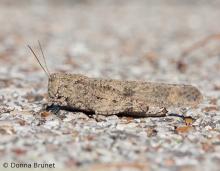
Species Types
Scientific Name
Dissosteira carolina
Description
The Carolina grasshopper is frequently seen in dusty, open habitats like dirt roads and vacant lots. Its yellow-bordered, black hindwings make it look like a mourning cloak butterfly.
Media

Species Types
Scientific Name
Trimerotropis saxatilis
Description
The lichen grasshopper sticks to sunny, rocky areas, such as the many rocky glades and hilltops in the Ozarks, where lichens are plentiful. It is perfectly camouflaged there.
Media

Species Types
Scientific Name
About 1,000 species in North America north of Mexico
Description
Many apid bees are well-known. This family includes the familiar honeybee, bumblebees, and carpenter bees, plus many that are less well-known. With few exceptions, most of Missouri's apid bees are native, solitary species.
Media
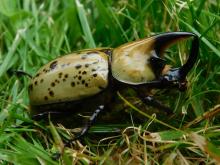
Species Types
Scientific Name
Dynastes tityus
Description
The eastern Hercules beetle is a breathtaking animal. Like its Greek-hero namesake, it is big and strong. Males have horns; females do not. Hercules beetles are harmless to people.
Media

Species Types
Scientific Name
Pachydiplax longipennis
Description
Blue dasher males and females look quite different. Both have a white face, a black abdomen tip, and slanted black and yellow stripes on the thorax. But males are blue and females are striped black and yellow.
Media
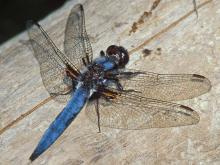
Species Types
Scientific Name
Ladona deplanata
Description
The male blue corporal has a rather dark blue body, a black head, and dark marks at the wing bases. Females and young males are brownish and have two short "corporal" stripes on the side of the thorax, behind the eye.
Media

Species Types
Scientific Name
Tramea lacerata
Description
The black saddlebags is a dragonfly with memorable markings. Two dark blotches on each hindwing look like saddlebags.
Media
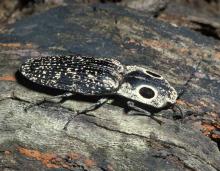
Species Types
Scientific Name
Alaus oculatus
Description
The eyed click beetle is only one of about 1,000 species of click beetles in North America. Most of the others are drab in comparison.
Media
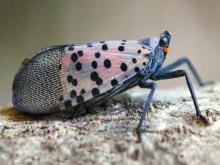
Species Types
Scientific Name
Lycorma delicatula
Description
The spotted lanternfly has not yet been found in Missouri, but it is present in several eastern states. It has the potential to damage our forests and food supply by feeding destructively on trees and crops.
Media
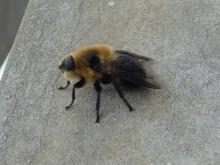
Species Types
Scientific Name
About 40 species in North America north of Mexico
Description
Bot flies are chunky, beelike flies usually with rounded heads. Adults are not commonly seen. The larvae are short, pudgy, segmented grubs that live as parasites in the tissues of animals. Those that live just under the skin often form a bulge. Some types live in the nasal or throat cavities of deer.
See Also



Media

Species Types
Scientific Name
Cisseps fulvicollis
Description
The yellow-collared scape moth is more often “orange-collared.” And whether you think it looks more like a firefly or a wasp, it’s still a moth!
Media

Species Types
Scientific Name
Nearly 150 species in North America north of Mexico
Description
Slim, delicate plume moths are instantly recognizable by their T-shaped silhouette, long legs, and muted shades of tan and brown. It can be hard to separate the various species.
Media

Species Types
Scientific Name
Pyrrharctia isabella
Description
Not many people know the adult Isabella tiger moth when they see one, but we’re all acquainted with its caterpillar, the woolly worm, or woolly bear.
About Land Invertebrates in Missouri
Invertebrates are animals without backbones, including earthworms, slugs, snails, and arthropods. Arthropods—invertebrates with “jointed legs” — are a group of invertebrates that includes crayfish, shrimp, millipedes, centipedes, mites, spiders, and insects. There may be as many as 10 million species of insects alive on earth today, and they probably constitute more than 90 percent all animal species.





















